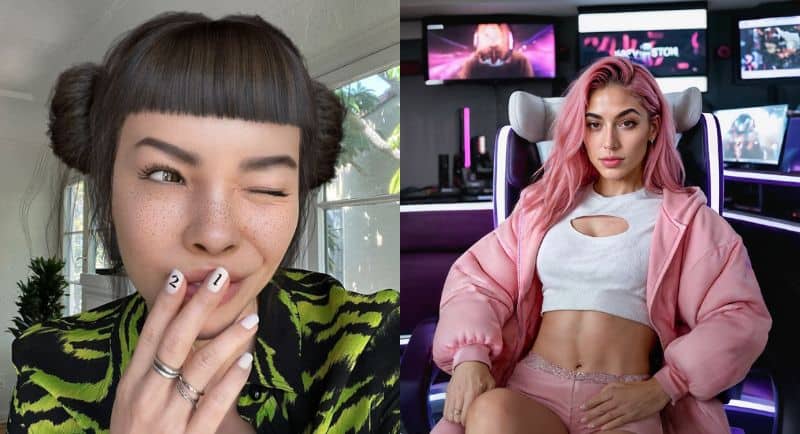By Patrick Whitnall, managing director at AiMCO
Meet Miquela Sousa, better known as @lilmiquela, one of the most popular viral influencers on Instagram. With more than 2.9 million followers, she’s partnered with iconic fashion brands like Prada and Calvin Klein, and in 2019, she was listed as one of TIME Magazine’s 25 Most Influential People on the Internet.
The only catch? She’s not real – she’s a robot.
Miquela is an AI influencer – a social media personality created by artificial intelligence.
View this post on Instagram
Like Miquela, many AI influencers are quickly becoming just as powerful as human personalities in the influencer space. They’ve amassed huge followings, secured endorsements, and even have their own merchandise lines – and they can be programmed to say and do anything.
It’s a brave new world – the influencer industry of the future, where there’s really no distinction between your favourite IRL influencer and a highly realistic digital avatar.
While the Australian AI influencer industry is still in its infancy, globally, it’s already on the rise, with the market expected to reach a whopping $13.8 billion by 2025, according to The Drum.
In Spain, AI model Aitana is currently earning up to €10,000 a month, sharing content to her 311,000 Instagram followers, and she’s recently become the face of Big, a sports supplement company.
She’s also a judge in the world’s first Miss AI contest – yep, that’s a beauty competition for avatars, with the competition sponsored by Fanvue, a platform for AI-created influencers.
It’s an exciting space, with the potential for exponential growth in the coming years; but just how it will change the face of the influencer landscape, particularly the work of human creators, is yet to be seen.
For brands, the biggest drawcard for AI user generated content (UGC) lies in its scalability, cost-effectiveness, and globalisation.
Many human influencers often struggle with content volume – they simply can’t make enough diverse, authentic content to keep up with demand. AI UGC offers scalability, without fatigue. Bots can generate thousands of personalised posts, allowing brands to maintain a consistent and tightly controlled presence across their platforms. This also means the content is more cost-effective to produce, enabling brands to allocate their resources more efficiently.
Additionally, AI UGC adapts effortlessly to different languages and cultural nuances. While human influencers can find it difficult to bridge language gaps or make a mark outside their own country, AI influencers are able to engage global audiences without the language barriers.
The benefits seemingly make the investment in AI UGC a no-brainer – so does it spell the end for the human influencer industry, just as it’s really starting to take off?
The simple answer is no.
Like other industries, whether it’s manufacturing, healthcare, or retail: the answer lies in collaboration, not competition.
Just as other workplaces across Australia and beyond have adapted AI into their daily workflows, human influencers can do the same, using AI UGC to enhance their activities.
Creators can leverage AI-generated content to expand their story-telling capabilities, freeing up time for strategy and deeper engagement with their followers – a critical activity that requires a human touch. AI tools also inspire new ideas – imagine an influencer receiving AI-generated prompts for unique content angles or fresh perspectives. It’s all about using the technology to take human content to the next level – without the effort.
It’s this new level of creative freedom that has unmatched potential for human influencers. By automating the more routine, day to day posts, influencers will have the space to explore riskier, more experimental content and let their creativity truly flourish.
But in a world where it’s increasingly difficult to distinguish between a human and a robot in your Instagram feed, how do you maintain trust? The success of the influencer-consumer relationship is rooted in trust, particularly when it comes to promoting or endorsing goods and services.
Disclosure and transparency will become more critical than ever, particularly for brands leveraging AI UGC to sell their products. Just as the industry has shifted to require human influencers to disclose their paid partnerships and endorsement – and AiMCO has developed an Ad Disclosure Guide and Code of Practice to support this – the same should apply for AI influencers. Being transparent is critical to the influencer game – and it’s no different for avatars.
The transparency issue is already rearing its ugly head, with image theft via AI on the rise, including in Australia. Just recently, Adelaide man Antonio Alvaro was unmasked as an AI thief, taking images of real women, without their permission, to create highly profitable virtual influencers. In response, a petition to the Federal Government was created, calling for urgent action against this AI-driven misappropriation of images. And rightly so, it’s blatant theft, with AI thieves standing to make millions from virtual influencer accounts and content – with no consequences. It’s just an example of the need for regulation in a rapidly evolving industry and one that AiMCO is investigating.
So far, the reaction to AI influencers has been resoundingly mixed. Compare Miquela’s huge following with the controversy surrounding Formula E team Mahindra’s artificially created “AI Ambassador” – it was met with such negativity from the team’s fans that the entire program was wiped from the internet in less than 48 hours.
But as brands start to not only understand but embrace the cost and IP ownership appeal of AI influencers, it’s an industry that’s only going to grow – and likely be broadly adopted before we know it.
–
Top image: Miquela Sousa and Aitana Lopez

